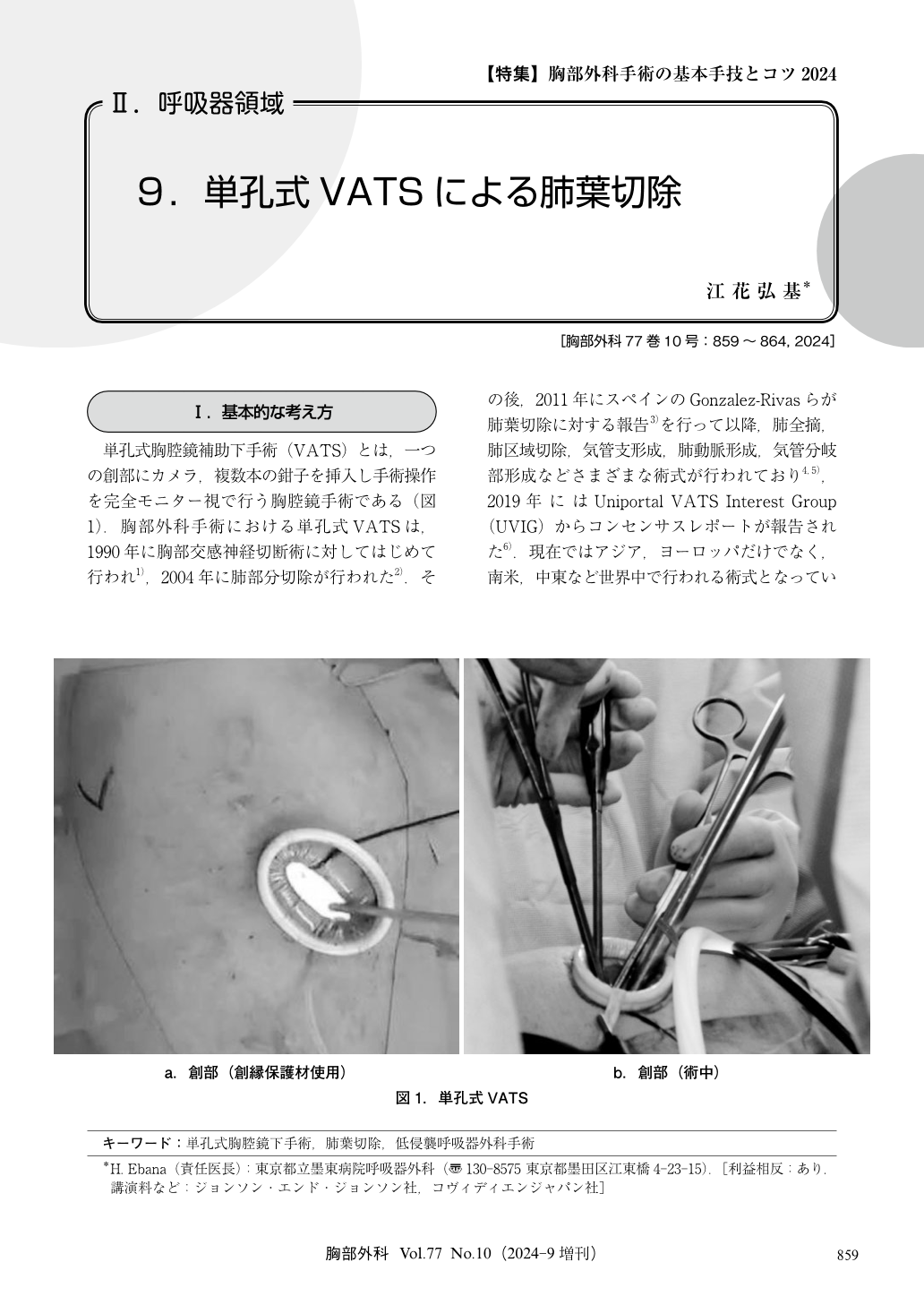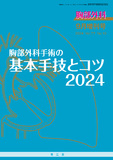Japanese
English
- 有料閲覧
- Abstract 文献概要
- 1ページ目 Look Inside
- 参考文献 Reference
単孔式胸腔鏡補助下手術(VATS)とは,一つの創部にカメラ,複数本の鉗子を挿入し手術操作を完全モニター視で行う胸腔鏡手術である(図1).胸部外科手術における単孔式VATSは,1990年に胸部交感神経切断術に対してはじめて行われ1),2004年に肺部分切除が行われた2).その後,2011年にスペインのGonzalez-Rivasらが肺葉切除に対する報告3)を行って以降,肺全摘,肺区域切除,気管支形成,肺動脈形成,気管分岐部形成などさまざまな術式が行われており4,5),2019年にはUniportal VATS Interest Group(UVIG)からコンセンサスレポートが報告された6).現在ではアジア,ヨーロッパだけでなく,南米,中東など世界中で行われる術式となっている.
Uniportal video-assisted thoracoscopic surgery (VATS) is a thoracoscopic surgery in which a camera and multiple forceps are inserted into one wound and the operation is performed under complete monitoring. Since Diego Gonzalez-Rivas reported on lobectomy in 2011, various other procedures such as pneumonectomy, segmentectomy, sleeve, double sleeve, and carina reconstruction have been performed. Now, it is performed not only in Asia and Europe, but also in South America, the Middle East, and other parts of the world. The advantage of uniportal VATS is that the wound is small and only one intercostal space is damaged, which reduces postoperative wound pain and preserves cosmetic appearance. In addition, since the camera and forceps enter through the same wound, the operation can be performed intuitively, and in case of bleeding or other emergencies, a port can be added to switch multi-portal VATS or extend the wound to shift thoracotomy. On the other hand, the disadvantages are the insertion of multiple forceps through one wound, which may limit operability and interference, and tend to be solo surgery, which requires the skill of the surgeon. This time, the video of uniportal VATS for each lung lobe will be presented and the surgical techniques will be explained.

© Nankodo Co., Ltd., 2024


